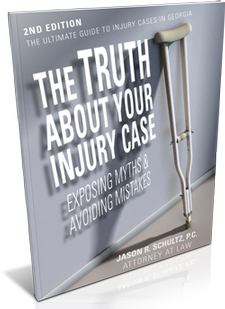Understanding Comparative Negligence
Another important aspect of personal injury claims is comparative fault. Georgia subscribes to the comparative negligence – 50 percent bar rule, a law that essentially states you can only file and recover from a personal injury claim when you were 50 percent or less at fault for the accident.
After the insurer reviews the circumstances of the accident, you will be assigned with a degree of fault. If you win your case, your settlement award will be reduced by your degree of fault. For example, let's say that after a car accident, your lawyer produces witness testimony that describes how the other driver was driving recklessly while changing lanes and struck you. However, the other driver’s attorney produces a witness who says you were traveling in a restricted lane that was closed to traffic at the time of the accident.
In this case, the insurer or court may find that the other driver is 70 percent at fault and you are 30 percent at fault. If your damages totaled $100,000, your settlement will be reduced by your proportion of blame, i.e., your final compensation will be $70,000.
Having a Personal Injury Lawyer Help You through the Legal Process
Establishing the elements of a personal injury claim, collecting enough evidence to support it, and then pursuing the claim in a diligent and timely manner is no easy feat. If your claim is significant, it’s a good idea to hire an attorney to assist you with process and fight to get the highest settlement possible.
For a lawyer in Georgia who handles all types of personal injury claims and has an excellent track record of winning sizable settlements for clients, call the Law Office of Jason R. Schultz. Your initial consultation is free, and we work on a contingency basis (we don’t get paid unless we win your case), so you’ve got nothing to lose. Call us today at 404-474-0804 or contact us online.


